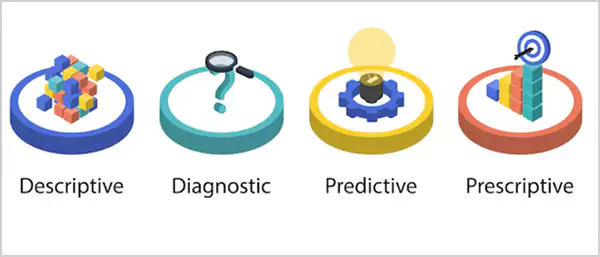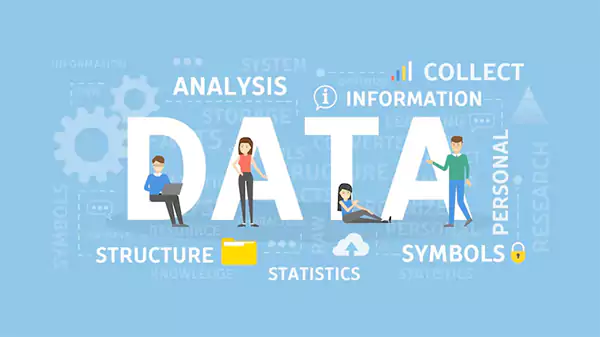Data analysts work with a large amount of data and information. They collect, interpret, and visualize data in a simple and meaningful way to support the organization’s goals and growth.
What Does a Data Analyst Do? Everything You Should Know
- Who is a Data Analyst?
- What Does a Data Analyst Do?
- What are the Major Types of Data Analysts in 2025?
- Job Description and Key Responsibilities of a Data Analyst
- What are the Necessary Skills Required for Data Analysts?
- What Does an Analyst Do to Make a Successful Career?
- Why are Data Analysts Important for Businesses?
- Wrapping Up
- Frequently Asked Questions
I am sure you might know at least one data analyst in your circle. The global market of Data analytics is expected to reach $402.7 billion by 2032 (from $82.23 billion in 2025). And every business owner I meet now somehow reminds me of a growing need for data analysts.
But what does a data analyst do? If you have the same query, I am sure you will get all your answers in this detailed guide.
To give you some context, a data analyst collects, handles, and analyzes data to make it useful. So, tag along as I will explain what data analysts do that makes them so important.
Who is a Data Analyst?

Before we get into “What do data analysts do?”, let’s briefly try to understand who they are. A person who gathers, interprets, and uses data to help individuals or organizations make smart and data-driven decisions is known as a data analyst.
In layman’s terms, they study a large amount of raw data and analyse the information to find trends and provide useful insights. For example, imagine a brand showing you products that might be useful for you based on your browsing history. This personalized recommendation is one of many magical works of a data analyst.
Data analysis is a very broad branch, and it can be used across industries and aspects. I am talking about politics, business, education, marketing, finance, customer behavior, and whatnot. It is an attractive career path right now. So, let’s dig deep into the adventure, which I call “Data Analyst: What do they do?”.
What Does a Data Analyst Do?

The exact roles and day-to-day work of a data analyst will vary based on industry, company, niche, and profile. However, there is a similar pattern in their process, and the core functions remain the same. Let’s try to broadly understand what a data analyst does.
Here’s what a general analyst’s duties might involve:
- Research: The first task of any kind of analyst is to do extensive research on company and industry data. This helps in identifying growth opportunities and highlighting areas that require improvement.
- Data Gathering: This step is all about figuring out what is important and required, and where to find that information.
- Data Collection: This is one of the most important parts of data analytics. It is crucial to collect important data from different sources, like surveys, APIs, internal databases, or public datasets, to come up with correct and useful insights.
- Data Cleaning: They also have to check data for consistency, removing duplicate, incorrect, or incomplete data. Your data should be accurate for optimal analysis.
- Creating Algorithms: Analysts may also have to use scripts and formulas to make an algorithm that fits the primary goal. The algorithm helps in automating analysis and deriving useful insights.
- Data Modelling and Visualization: It is an inherent part of a data analyst’s job. They need to identify trends, relationships, and patterns in data to facilitate decision-making. Furthermore, they also take care of the visualization part. A good analyst always makes things easier for you by presenting data through a dashboard, charts, and helpful visuals.
Understanding “what do analysts do” is one thing. But how are they able to handle such large datasets? Don’t worry, I will cover everything in the following sections.
What are the Major Types of Data Analysts in 2025?
As might have been understood by now, data analytics is evolving, and its applications are vast. From healthcare to technology, every industry is relying on data. After all, data is the new oil (famous quote by Clive Humby).

So, to understand different types of analysts better, let’s try to understand the four main categories of data analytics:
- Descriptive: Analysts focus on the past trends and performance (for example, monthly, weekly, and yearly sales records) to make future decisions.
- Diagnostic: This is mostly done to find the root cause of an outcome. It involves comparing past data to find why something negative or positive happened.
- Predictive: As the name suggests, this involves using historic data to predict or forecast future outcomes. Predicting next quarter’s sales is an example of this type of analysis.
- Prescriptive: This analytics suggests the next course of action after carefully studying data and using algorithms to come up with an action plan.
If we talk about the job titles, market research analyst, operations analyst, and risk analyst are some of the most popular analyst roles.
Job Description and Key Responsibilities of a Data Analyst

Although job responsibilities depend on the company providing the position, the overall objective is the same. The primary goal is to move from data to decisions. So, let’s further the answer to the question “What does an analyst do?”.
Here are a few things you may find in the job description for the role of a data analyst:
- Researching, designing, and handling databases and data systems (both internal and external). You may have to fix coding errors as well.
- Extracting and organizing data from different sources and data flows.
- Your job included using different statistical and advanced data tools to identify useful trends and patterns.
- Analysts also have to collaborate with engineers, business executives, developers, and require department heads to improve systems and overall operations.
- The role also requires you to document analysis steps to allow others to understand and replicate the process.
- Analysts’ final and one of the most important tasks is to present data in a meaningful way and maintain reports and dashboards for the benefit of the organization.
To sum up the role, A data analyst researches, gathers, cleans, organizes, and visualizes information to show what the data actually means and how to make the most out of these insights.
What are the Necessary Skills Required for Data Analysts?
Now that you know what a data analyst does, you should also be aware of the necessary skills required to take on the job. You need to develop a good combination of problem-solving and soft skills. Here’s what you need to focus on:
- Analytical thinking: The first and foundational skill required for becoming a successful analyst is the ability to study complex data and identify meaningful insights.
- Technical Skills: An analyst has to be proficient in using tools and languages, such as SQL, R, Python, Tableau, Power BI, Excel, Sheets, and more, for effective analysis and visualization.
- Good Communication: Apart from the technical skills, this role also requires you to be good at your soft skills. This will come in handy while explaining complex technical findings to others in a simple way.
- Business Understanding: One cannot come up with useful insights without having a basic business understanding of the industry or the niche. Understanding how data connects to the company’s objective is crucial.
- Critical Thinking: Ability to examine data quality, ask important questions around assumptions, and make logical decisions.
Overall, you need to have an active curiosity and a continuous learning mindset. Everything around us is changing fast, and staying updated with new trends, technology, tools, regulations, etc., is crucial in this competitive market.
What Does an Analyst Do to Make a Successful Career?
A successful career in data analysis starts with the correct mix of education, skills, and experience. There are now various dedicated data analytics and data science-related programs, which can be a great starting point if you want to become an analyst.
If you are new, an associate’s or bachelor’s degree is good to provide you with a good foundation. However, times have changed now, and formal education is not the only entry point in 2025. Many people are identifying ways to enter the field through completing certifications for data professionals, online courses, and boot camps that have a focus on more practical job skills.
Irrespective of the path you choose, here’s a general process of “What do analysts do?” to build a good career:
Step 1: Build a Strong Foundation
Learn all the basics of how data is collected, interpreted, and visualized. Understand how using data in a way can make a powerful contribution to the world.
Step 2: Develop Technical Skills and Work with Real Data
Start doing projects from open sources and getting hands-on experience with tools like Python, R, SQL, and other platforms. Learn all the steps of the data analytics process and also work on your soft skills.
Step 3: Create a Portfolio
Now it is time to showcase your skills and work. You need to show what you will bring to the table and how you can add value in solving real problems.
Step 4: Apply for Entry-Level Jobs
Once you are done with a strong portfolio, start looking for a fresher role or internships. Starting is the most crucial step to climb any ladder.
Step 5: Level Up with Certifications
Once you start showing results and as you grow with time, start upskilling yourself to stay relevant and ahead of others. Think about pursuing advanced certifications or even a master’s degree to unlock more opportunities in the field.
The potential is unlimited in this field. We are talking, eating, and breathing data at this point. So, start now if you are interested in handling data and numbers.
Why are Data Analysts Important for Businesses?
Another question I get to hear from people is, “What does an analyst do for business growth?” Well, they work as a guiding force to influence decisions based on their findings and data. They allow businesses to make informed and data-driven decisions, anticipate customer behavior, and market changes.
Furthermore, they also help them in setting achievable objectives. I think everyone should hire a good data analyst, even small businesses. This will drastically decrease the chances of making a faulty decision. It is time to stay away from assumptions and start making decisions based on facts and numbers.
While it cannot always be accurate, it offers the most reliable view of past performance and future projections.
Wrapping Up
Trust me and many other experts, Data analytics is not just a trend, it is here to stay and dictate the actions of business. So, if someone asks you: What does a data analyst do? Tell them that they are the backbone of modern decision-making in an organization.
So, if you are a business owner, go and start working on establishing a data analytics team. And if you are passionate about problem-solving and data, a career in analytics can be rewarding. If you like the blog, please send it to more people who may find this information useful.
Frequently Asked Questions
What exactly do data analysts do?
What is a data analyst’s salary?
An entry-level analyst in the US can get an average salary of around $60,000. The number can exceed $100,000 for experienced analysts, and $150,000 for senior or lead analysts.
How to Become a Data Analyst?
Start by gaining foundational knowledge and getting a degree or certification. Then, start working on projects and gain real-world and practical knowledge. Then, build a portfolio and start finding jobs as a fresher or internships to become an analyst.
Can AI replace a data analyst?
No, it cannot completely replace data analysts, but it will help them do things efficiently by automating repetitive tasks.
Is coding required for data analysis?
You don’t necessarily have to know coding to become a data analyst. But it can certainly be a plus point to attract employees. Plus, some companies may need you to know coding, so it depends on the company and the role.
In the fleetly evolving geography of digital education, using slice- edge software development services are essential for creating poignant literacy…
Many companies can’t afford to slow down, and have put a facet of their business in order. Managing your business…
Why Microsoft 365 E3 Is Worth Considering Selecting the right productivity suite can have a significant impact on your business…
Secure software is an essential part of business operations and growth. Keeping your company’s software secure by utilizing an ongoing…
The Importance of Security Monitoring in Finance Financial institutions are prime targets for cybercriminals due to the sensitive data and…
In the rapidly evolving landscape of information technology and corporate communications, the concept of data resilience has taken on a…
When it comes to eSIM, the majority of people immediately think about “digital” as being synonymous with “more secure.” However,…
Data loss barely feels problematic at first. Files hesitate, system lag and then something or the other stops responding properly.…
AI hasn’t just become a part of our lives – it has reshaped how we work, share information and protect…

